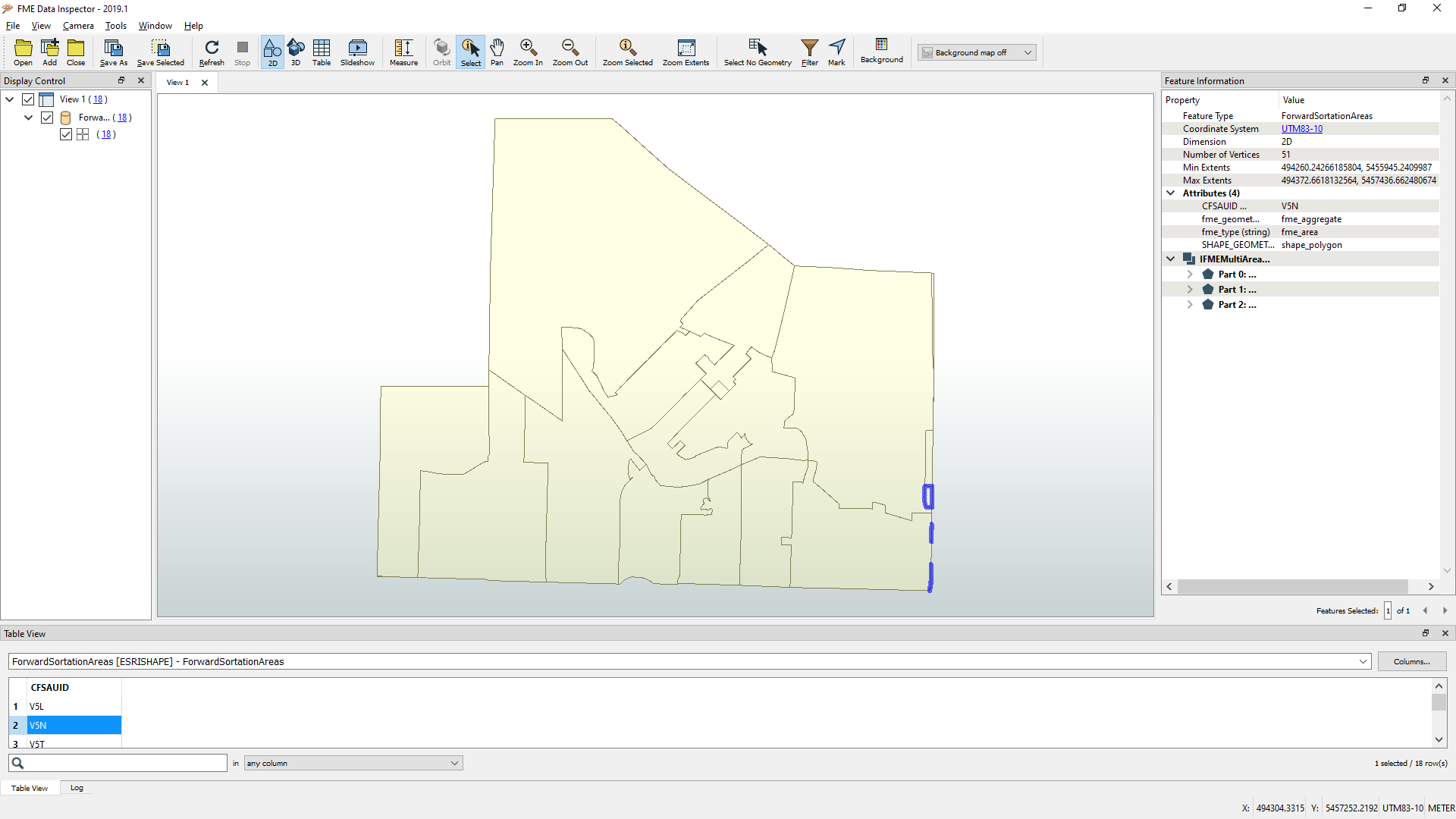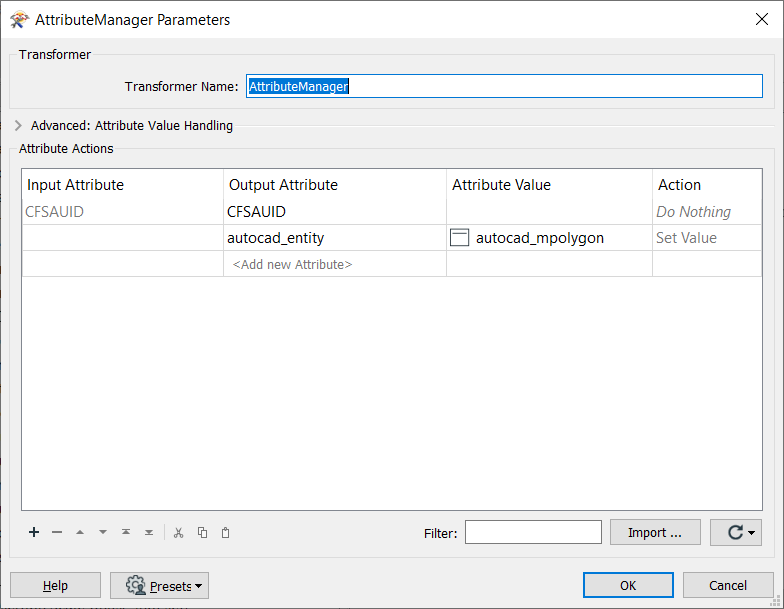Hi @joe_gerner,
It looks like the Shapefile contains some multipart geometries (1 table record having more than 1 geometry parts associated to it). See the selected table record and associated geometries in screenshot below:

When this feature is written to DWG, it gets output as three features instead of one.
Hope this helps,
Simon
Hi @joe_gerner,
It looks like the Shapefile contains some multipart geometries (1 table record having more than 1 geometry parts associated to it). See the selected table record and associated geometries in screenshot below:

When this feature is written to DWG, it gets output as three features instead of one.
Hope this helps,
Simon
Hi, thanks for your answer. Can I change this in the transformation?
Hi, thanks for your answer. Can I change this in the transformation?
Hi @joe_garner,
If you want to retain the multipart polygon geometries in the output DWG file then you can use an AttributeCreator / AttributeManager to set the autocad_entity to autocad_mpolygon. An Mpolygon is essentially the AutoCAD equivalent of a multipart polygon. Some documentation from Safe on Mpolygons can be found here:
https://docs.safe.com/fme/html/FME_Desktop_Documentation/FME_ReadersWriters/acad/MPolygons.htm
A screenshot of the AttributeManager parameters can be seen below:

Based on the example input Shapefile (ForwardSortationAreas.shp), setting the autocad_entity to autocad_mpolygon using the AttributeCreator / AttributeManager will result in 18 features being written to the DWG file, matching that of the input dataset.
Thanks,
Simon


